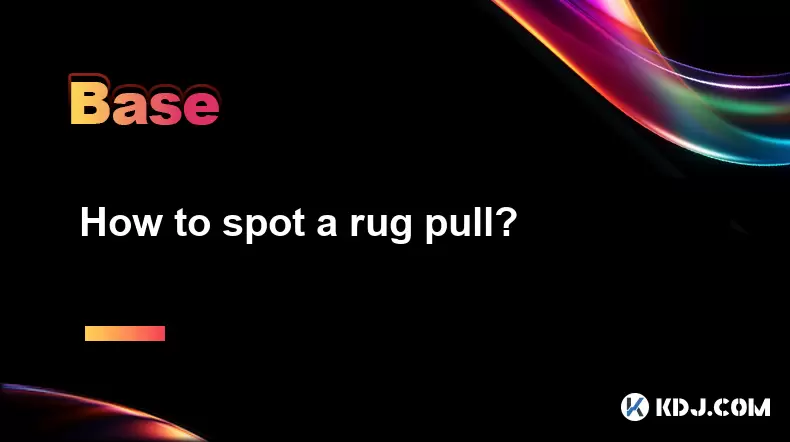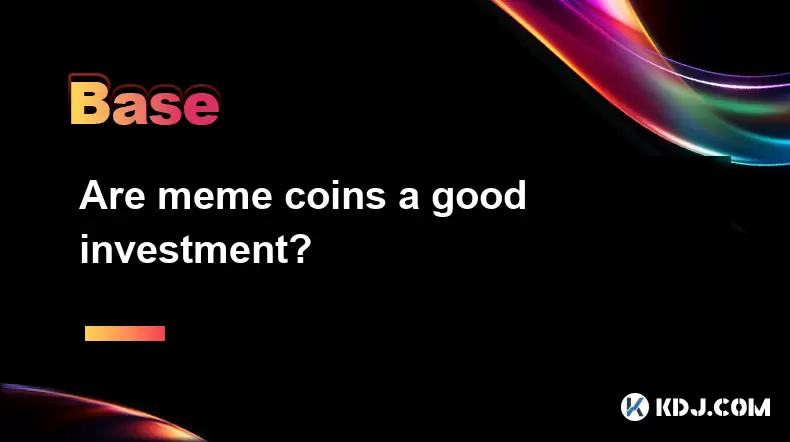-
 Bitcoin
Bitcoin $116700
0.24% -
 Ethereum
Ethereum $3973
4.34% -
 XRP
XRP $3.283
7.68% -
 Tether USDt
Tether USDt $1.000
0.01% -
 BNB
BNB $789.8
2.27% -
 Solana
Solana $176.2
3.31% -
 USDC
USDC $0.9999
0.00% -
 Dogecoin
Dogecoin $0.2238
5.14% -
 TRON
TRON $0.3389
-0.51% -
 Cardano
Cardano $0.7907
4.03% -
 Stellar
Stellar $0.4527
10.02% -
 Hyperliquid
Hyperliquid $41.07
4.27% -
 Sui
Sui $3.794
1.77% -
 Chainlink
Chainlink $19.49
10.40% -
 Bitcoin Cash
Bitcoin Cash $580.9
0.74% -
 Hedera
Hedera $0.2617
4.32% -
 Avalanche
Avalanche $23.41
3.67% -
 Ethena USDe
Ethena USDe $1.001
-0.03% -
 Litecoin
Litecoin $122.4
1.38% -
 Toncoin
Toncoin $3.364
1.49% -
 UNUS SED LEO
UNUS SED LEO $8.988
0.37% -
 Shiba Inu
Shiba Inu $0.00001295
2.82% -
 Uniswap
Uniswap $10.62
5.75% -
 Polkadot
Polkadot $3.922
4.46% -
 Dai
Dai $1.000
0.01% -
 Bitget Token
Bitget Token $4.494
2.15% -
 Monero
Monero $268.0
-1.30% -
 Cronos
Cronos $0.1523
3.68% -
 Pepe
Pepe $0.00001127
4.43% -
 Aave
Aave $285.4
4.85%
How to spot a rug pull?
A rug pull occurs when crypto developers abruptly abandon a project and drain liquidity, leaving investors with worthless tokens—always verify audits, locked liquidity, and team transparency to avoid scams.
Aug 08, 2025 at 11:21 pm

Understanding the Concept of a Rug Pull
A rug pull is a type of scam prevalent in the decentralized finance (DeFi) and cryptocurrency space where developers or team members behind a project suddenly abandon it and withdraw all the funds invested by users. This typically occurs in liquidity pools on decentralized exchanges (DEXs) like Uniswap or PancakeSwap. The perpetrators often create a seemingly legitimate token, promote it aggressively, and then remove the liquidity, leaving investors with worthless tokens. The term "rug pull" originates from the idiom "pulling the rug out from under someone," symbolizing a sudden and unexpected betrayal.
In many cases, the project may appear promising, with professional websites, active social media channels, and even audits claimed to have been completed. However, the absence of genuine utility or transparent development makes these projects vulnerable to exploitation. The core mechanism involves locking investor funds in a liquidity pool, where the developers hold a significant portion of the tokens or control over the pool’s liquidity. Once enough capital is attracted, the creators execute the pull by removing liquidity, crashing the token price to near zero.
Red Flags in Tokenomics and Liquidity Structure
One of the most effective ways to detect a potential rug pull is by analyzing the tokenomics and liquidity distribution of a project. Projects with an unfair token allocation—such as a large percentage of tokens held by a single wallet or the development team—are at high risk. Use blockchain explorers like Etherscan or BscScan to check the token's holder distribution.
- Examine if one or a few wallets hold a dominant share of the total supply.
- Look for renounced contract ownership—if the developers have not renounced control over the contract, they can manipulate the token at will.
- Check if the liquidity is locked using a service like Unicrypt or Team Finance. Locked liquidity means the funds cannot be withdrawn for a set period, reducing the risk of a sudden pull.
- Verify the percentage of total supply added to the liquidity pool. If it’s unusually low, it may indicate insufficient backing.
Projects that fail to lock liquidity or allow the team to withdraw funds at any time should be treated with extreme caution. A transparent project will often provide proof of locked liquidity with a verifiable time lock.
Assessing Smart Contract Security and Audit Status
The integrity of a cryptocurrency project heavily depends on the security of its smart contract. A rug pull can be executed through malicious code embedded in the contract, such as functions that allow unlimited minting or sudden withdrawal of liquidity. Always verify whether the project’s smart contract has been audited by a reputable third-party firm.
- Look for audit reports from well-known firms like CertiK, Hacken, or PeckShield.
- Read the audit findings carefully—some audits may highlight critical vulnerabilities that have not been fixed.
- Use tools like Token Sniffer or RugDoc to scan the contract for red flags such as hidden functions, blacklisted addresses, or high-risk code patterns.
Even if an audit is present, be cautious of fake or outdated reports. Scammers often forge audit badges or use audit services from obscure, untrusted organizations. Cross-check the audit report on the auditor’s official website to confirm authenticity.
Community and Communication Transparency
A healthy crypto project fosters an active and transparent community. Scam projects often lack genuine engagement and rely on bots or paid promotions to create false momentum. Investigate the project’s presence across platforms such as Telegram, Discord, Twitter, and Reddit.
- Determine whether the team is doxxed (publicly identified). Anonymous teams increase the risk of fraud.
- Evaluate the quality of discussions in community channels—excessive hype, repetitive messages, or suppression of critical questions are warning signs.
- Check if the team responds to technical inquiries with detailed and consistent answers.
Projects that prohibit criticism or ban users for asking tough questions are likely hiding something. Genuine development teams welcome scrutiny and provide regular updates on progress, roadmaps, and challenges.
Behavioral Patterns and Market Manipulation Signs
Unusual trading activity can indicate an impending rug pull. Monitor price movements and trading volume closely, especially in the early stages of a token’s launch.
- Watch for extreme price pumps followed by sudden dumps—this could mean insiders are selling their holdings.
- Identify low trading volume despite high price increases, which suggests manipulation rather than organic demand.
- Use decentralized analytics platforms like Dextools or Poocoin to view real-time liquidity changes and whale transactions.
If you notice the liquidity being removed gradually or in large chunks, it may be the start of a rug pull. Set up price and liquidity alerts to stay informed of sudden changes.
How to Use On-Chain Tools to Monitor Risk
Leveraging blockchain analysis tools can significantly enhance your ability to detect suspicious activity. These tools allow you to inspect wallet addresses, track token movements, and assess contract risks in real time.
- Use Etherscan or BscScan to view the token contract and analyze transaction history.
- Input the token address into RugDoc.io to receive a risk assessment based on contract functionality.
- Utilize Nansen or Bubblemaps to identify smart money movements and detect if large wallets are exiting the pool.
- Check DeFi Llama to see if the project is listed on reputable platforms, which often conduct basic due diligence.
Creating watchlists for tokens you’re monitoring enables proactive detection of red flags. Regularly review wallet balances, transaction logs, and liquidity metrics to stay ahead of potential scams.
Frequently Asked Questions
Can a project with a verified audit still be a rug pull?
Yes. An audit does not guarantee safety. Some audits miss critical vulnerabilities, and others are falsified. Developers can also deploy unaudited contracts after passing an audit on a different version. Always verify the audit’s legitimacy and check for ongoing risks.
What does "renounced contract" mean, and why is it important?
A renounced contract means the developer has permanently given up control over the token’s smart contract, preventing them from making unauthorized changes. This reduces the risk of a rug pull because the code becomes immutable.
How can I check if liquidity is locked?
Visit the liquidity pool’s address on a blockchain explorer. Look for interactions with locking services like Unicrypt or Team Finance. These platforms issue lock certificates with timestamps and durations. Confirm the lock covers a significant portion of the total liquidity.
Is it possible to recover funds after a rug pull?
In most cases, recovery is highly unlikely. Once liquidity is withdrawn and funds are transferred to anonymous wallets, tracing and reclaiming assets is nearly impossible. Prevention through due diligence is the most effective strategy.
Disclaimer:info@kdj.com
The information provided is not trading advice. kdj.com does not assume any responsibility for any investments made based on the information provided in this article. Cryptocurrencies are highly volatile and it is highly recommended that you invest with caution after thorough research!
If you believe that the content used on this website infringes your copyright, please contact us immediately (info@kdj.com) and we will delete it promptly.
- Bitcoin, Litecoin, and Avalanche: Decoding the Crypto Buzz in the Big Apple
- 2025-08-09 00:30:12
- Pengu Takes Flight: Can This Solana Meme Coin Conquer the Top 3?
- 2025-08-09 00:50:13
- Coinbase's Big Bet: DEX Trading and the Everything App Vision
- 2025-08-09 01:30:12
- Ethereum and Shiba Inu: Navigating the Bull Move
- 2025-08-09 00:35:12
- Dogecoin, AI Coins, and CMC Listings: What's Hot and What's Not
- 2025-08-09 01:35:51
- Navigating the Crypto Market in 2025: Smart Decisions for Meme Coin Investing
- 2025-08-09 00:55:55
Related knowledge

Can you reuse a crypto wallet address?
Aug 08,2025 at 03:49pm
Understanding Wallet Addresses in CryptocurrencyA crypto wallet address is a unique identifier used to send and receive digital assets on a blockchain...

Are meme coins a good investment?
Aug 08,2025 at 11:36pm
Understanding Meme Coins and Their OriginsMeme coins are a category of cryptocurrencies that originated from internet humor or viral trends rather tha...

How are flash loans used?
Aug 08,2025 at 01:08pm
Understanding Flash Loans in Decentralized FinanceFlash loans are a unique innovation within the decentralized finance (DeFi) ecosystem, allowing user...

How to spot a rug pull?
Aug 08,2025 at 11:21pm
Understanding the Concept of a Rug PullA rug pull is a type of scam prevalent in the decentralized finance (DeFi) and cryptocurrency space where devel...

What is the environmental impact of crypto mining?
Aug 09,2025 at 12:28am
Energy Consumption of Cryptocurrency MiningThe environmental impact of crypto mining begins with its substantial energy consumption, primarily driven ...

What are common crypto trading strategies?
Aug 08,2025 at 12:42pm
Understanding Trend Following in Crypto TradingTrend following is one of the most widely adopted crypto trading strategies due to its simplicity and a...

Can you reuse a crypto wallet address?
Aug 08,2025 at 03:49pm
Understanding Wallet Addresses in CryptocurrencyA crypto wallet address is a unique identifier used to send and receive digital assets on a blockchain...

Are meme coins a good investment?
Aug 08,2025 at 11:36pm
Understanding Meme Coins and Their OriginsMeme coins are a category of cryptocurrencies that originated from internet humor or viral trends rather tha...

How are flash loans used?
Aug 08,2025 at 01:08pm
Understanding Flash Loans in Decentralized FinanceFlash loans are a unique innovation within the decentralized finance (DeFi) ecosystem, allowing user...

How to spot a rug pull?
Aug 08,2025 at 11:21pm
Understanding the Concept of a Rug PullA rug pull is a type of scam prevalent in the decentralized finance (DeFi) and cryptocurrency space where devel...

What is the environmental impact of crypto mining?
Aug 09,2025 at 12:28am
Energy Consumption of Cryptocurrency MiningThe environmental impact of crypto mining begins with its substantial energy consumption, primarily driven ...

What are common crypto trading strategies?
Aug 08,2025 at 12:42pm
Understanding Trend Following in Crypto TradingTrend following is one of the most widely adopted crypto trading strategies due to its simplicity and a...
See all articles

























































































